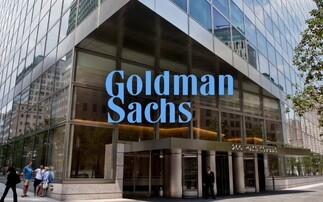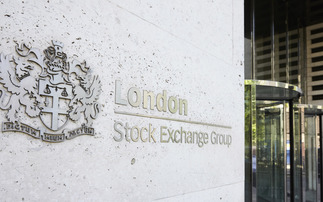Since early 2017, Asia has seemed a potential equity hotspot. But with everything selling off, it's been hard to keep sight of that in recent weeks. Lionel Melin, Lyxor's senior cross-asset strategist explains how the fundamentals - a weaker dollar, Chinese growth and global recovery - put Asia in a positive light.
Asia equities have reacted to the S&P correction and rising volatility, but they seem less concerned by rising treasury yields. As long as the dollar doesn't start to appreciate like it did between 2011 and the end of 2016, it should continue to provide support: less need for rate hikes to prop up currencies, lower USD debt servicing ratios and more foreign inflows. We felt it was time to look at these markets through the lens of the greenback weakness - after all growth, inflation and rate hikes had many expecting the opposite. The experience has been jarring, but what if it's only temporary?
Find out more about Lyxor's investment outlook at LyxorETF.co.uk
At the very least, there can be no complacency when investing in Asia. These markets aren't homogeneous, given varying degrees of political risk and their different sector make-ups, so your search for opportunity may be more demanding. Valuations may be more appealing when the dust settles on this correction, particularly in Japan, but some caution is needed - some markets are more expensive than others, have more of their borrowing in dollars and are more exposed to currency gyrations.
Below are our latest thoughts on the key Asian markets. We've included the correlation between the local index and the currency's strength vs. the dollar. A higher number means the market has tended to rise when local currency is stronger vs. the dollar - of course there are no guarantees. Similarly, a negative number means the market has tended to fall when the local currency is stronger. The further from zero, the stronger the relationship.
The results aren't always what you might expect - most people see Korea and Japan as an export-driven economies, but the correlation between the Korean Won and the MSCI Korea Index is actually positive (i.e. equity markets perform better when KRW strengthens) - the opposite has been true for the yen and the MSCI Japan.
More: 5 important facts on Japanese indices
Asia markets: outlook & correlation with local currency moves
Asian markets have reacted to the S&P correction and rising volatility, but have a good combination of improving fundamentals, moderate valuations and still reasonable liquidity - as long as the USD does not strengthen. China may not continue on the stellar trajectory of last year months, but both FX and growth have stabilised, meaning its economy anchors markets in the region. We favour the consumption and domestic stories.
- JAPAN: - 0.584
The sell-off doesn't undermine our positive view on Japan. Growth looks strong, as do earnings, and monetary policy remains largely out of sync with developed market central banks. Post-correction valuations look appealing. We focus on domestic sectors excluding financials.
- CHINA: + 0.273
Chinese equities benefit from robust equity flows through southbound on the offshore market, the positive perception of reforms and an only gradual growth slowdown. But we are neutral on the market given some concerns over valuations, particularly of growth stocks. We do not expect China to outperform broader indices this year.
- KOREA + 0.53
In our view, Korea still offers the greatest value in AXJ. The earnings growth surge and signs of improving governance have triggered a market rerating. North Korea tail risk appears to have receded for now.
- INDIA + 0.631
Earnings growth has taken a pause having been disrupted by demonetisation and the implementation of the goods and sales tax. Consumption growth is resuming and volume growth picking-up. We are tactically underweight. We expect the lull in outperformance to continue but reform progress shouldn't be underestimated.
- INDONESIA + 0.704
Indonesian growth has been largely disappointing, despite signs of strength at the back end of last year. Domestic consumption and credit growth remains weak, but earnings growth has generally met analyst estimates. Reforms are planned, but their implementation appears challenging.
- THAILAND + 0.492
Growth momentum is strong and earnings are showing signs of life, notably in the domestic part of the market. Financials in particular should benefit. Factor in an improved current account surplus and you can see why we favour Thai equities.
- ASEAN - MALAYSIA + 0.437
Growth momentum is improving, earnings are getting better and politics could become less uncertain after forthcoming elections in Thailand and Malaysia. The domestic story is strong.
Find out more about Lyxor's investment outlook at LyxorETF.co.uk
THIS COMMUNICATION IS FOR ELIGIBLE COUNTERPARTIES OR PROFESSIONAL CLIENTS ONLY
Source: Lyxor & SG Equity Strategy, Bloomberg. 15 February 2018. Based on 10yr monthly correlations for MSCI indices on each market to end January 2018. Past performance is no guide to future returns.
This document is for the exclusive use of investors acting on their own account and categorized either as "Eligible Counterparties" or "Professional Clients" within the meaning of Markets in Financial Instruments Directive 2004/39/EC. These products comply with the UCITS Directive (2009/65/EC). Société Générale and Lyxor International Asset Management (LIAM) recommend that investors read carefully the "investment risks" section of the product's documentation (prospectus and KIID). The prospectus and KIID are available free of charge on www.lyxoretf.com, and upon request to [email protected].
The products mentioned are the object of market-making contracts, the purpose of which is to ensure the liquidity of the products on the London Stock Exchange, assuming normal market conditions and normally functioning computer systems. Units of a specific UCITS ETF managed by an asset manager and purchased on the secondary market cannot usually be sold directly back to the asset manager itself. Investors must buy and sell units on a secondary market with the assistance of an intermediary (e.g. a stockbroker) and may incur fees for doing so. In addition, investors may pay more than the current net asset value when buying units and may receive less than the current net asset value when selling them. Updated composition of the product's investment portfolio is available on www.lyxoretf.com. In addition, the indicative net asset value is published on the Reuters and Bloomberg pages of the product, and might also be mentioned on the websites of the stock exchanges where the product is listed.
Prior to investing in the product, investors should seek independent financial, tax, accounting and legal advice. It is each investor's responsibility to ascertain that it is authorised to subscribe, or invest into this product. This document is of a commercial nature and not of a regulatory nature. This material is of a commercial nature and not a regulatory nature. This document does not constitute an offer, or an invitation to make an offer, from Société Générale, Lyxor Asset Management (together with its affiliates, Lyxor AM) or any of their respective subsidiaries to purchase or sell the product referred to herein.
Lyxor International Asset Management (LIAM), société par actions simplifiée having its registered office at Tours Société Générale, 17 cours Valmy, 92800 Puteaux (France), 418 862 215 RCS Nanterre, is authorized and regulated by the Autorité des Marchés Financiers (AMF) under the UCITS Directive (2009/65/EU) and the AIFM Directive (2011/31/EU). LIAM is represented in the UK by Lyxor Asset Management UK LLP, which is authorized and regulated by the Financial Conduct Authority in the UK under Registration Number 435658. Société Générale is a French credit institution (bank) authorised by the Autorité de contrôle prudentiel et de résolution (the French Prudential Control Authority).
Lyxor International Asset Management ("LIAM") or its employees may have or maintain business relationships with companies covered in its research reports. As a result, investors should be aware that LIAM and its employees may have a conflict of interest that could affect the objectivity of this report. Investors should consider this report as only a single factor in making their investment decision. Please see appendix at the end of this report for the analyst(s) certification(s), important disclosures and disclaimers. Alternatively, visit our global research disclosure website www.lyxoretf.com/compliance.














